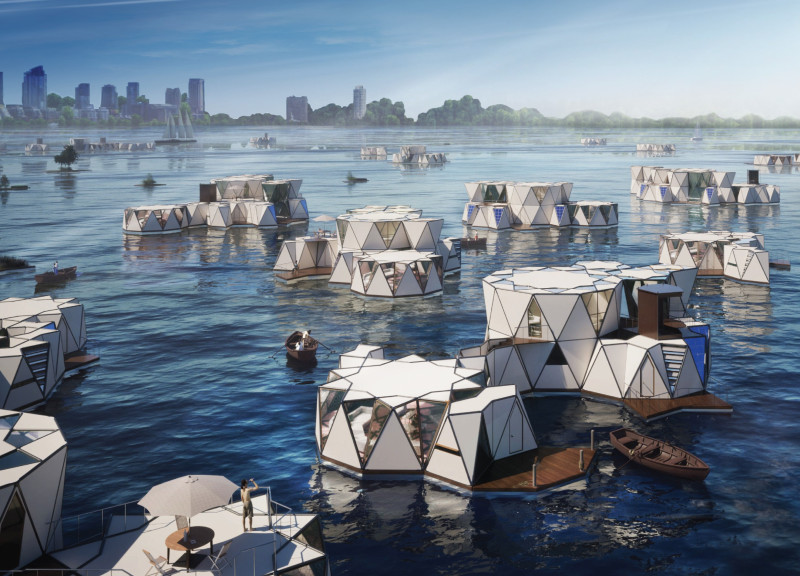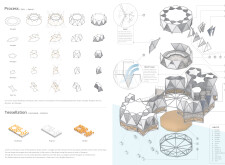5 key facts about this project
## Overview
The Tessella project is situated in Dubai, addressing the pressing issues posed by climate change and urban expansion. This innovative floating modular structure integrates traditional Islamic aesthetics with contemporary technology to create flexible living spaces. The design aims to forge a connection between architecture and nature while presenting a viable housing solution that can adapt to environmental challenges.
## Modular Design and Spatial Configuration
The Tessella project employs a modular architectural approach that enhances adaptability for diverse family structures and lifestyles. Its geometric tessellation includes various shapes, such as decagons and hexagons, allowing the creation of interconnected units that serve both residential and communal purposes. This spatial strategy enhances individual privacy while fostering community interaction, enabling units to function autonomously or as part of a cohesive residential environment.
## Environmental and Material Considerations
The material selection for the Tessella project is designed with sustainability and resilience in mind. Fiber-reinforced concrete serves as the basis for buoyant pontoons, ensuring stability amid rising water levels. The overall design incorporates glass panels for natural light and energy efficiency, aluminum framing for structural integrity, and wooden decking for aesthetic and functional outdoor spaces. Additionally, the project incorporates renewable energy solutions, such as solar panels and wind towers, enhancing its environmental performance while creating a comfortable microclimate.






















































